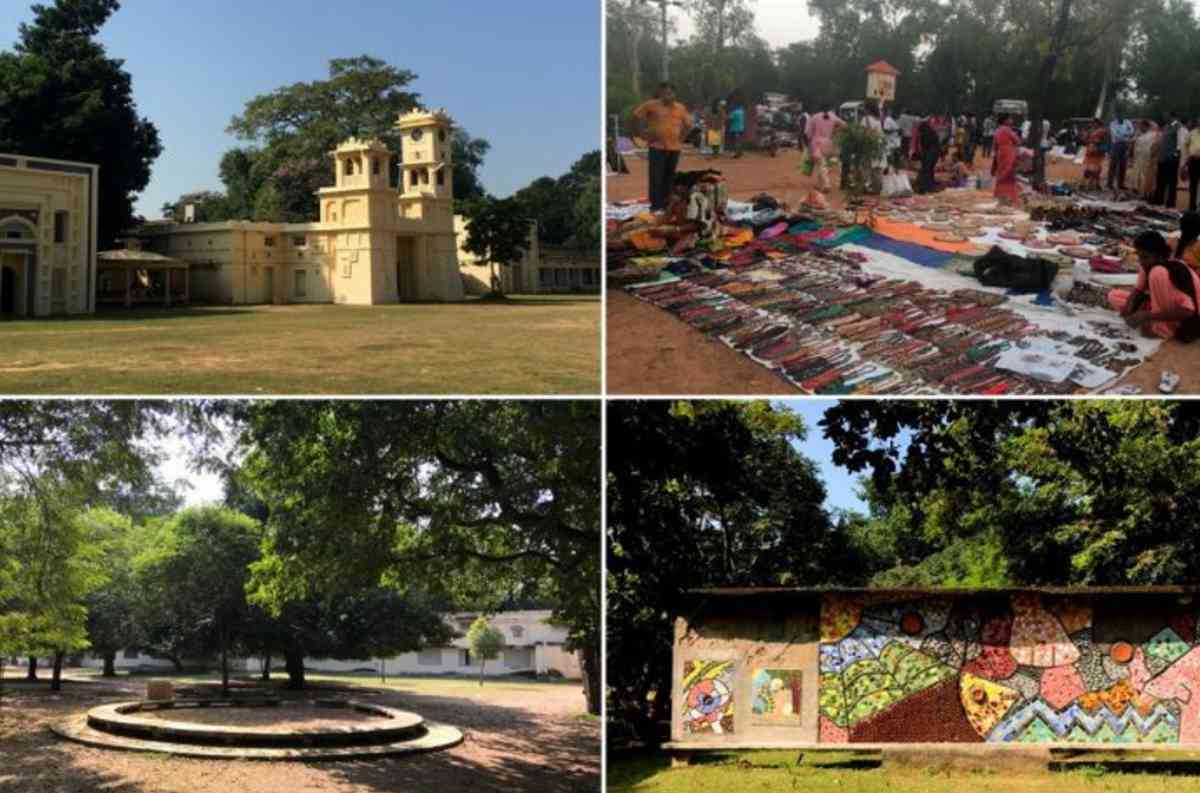Shantiniketan is an intersection of nature, culture, and history. No wonder it was declared a UNESCO World Heritage Site in 2023. Shantiniketan attracts tourists worldwide who wish to enjoy nature and local culture. Not to mention the integration of tribal culture with the mainstream one.
Historical overview of Shantiniketan
Many people believe that Rabindranath Tagore founded the town of Shantiniketan. However, it was founded by Maharshi Devendranath Tagore. He was the father of Rabindranath Tagore.
In 1863, Maharshi Devendranath Tagore purchased a large piece of land in Bhubandanga and renamed it Santiniketan (abode of peace). However, later in 1925, Visva Bharati University was established by Rabindranath Tagore.
The natural beauty of Shantiniketan
The cultural significance of Shantiniketan often overshadows its natural beauty. However, the red soil, moderate weather, laid-back lifestyle, and calm environment attract tourists and artists from across the world.
The abundance of Sonajhuri trees, green forests, the charm of Kopai River and its eroded landscape, everything makes Shantiniketan an oasis in the middle of technology and infrastructure.
Integration of nature and culture in tourism
Tagore Ashrama: Shantiniketan is inseparable from Tagore. So a visit to the Tagore Ashrama is a must. Tagore’s literary works, awards and personal belongings- you can have a first-hand visit to all these elements. Apart from that the beautifully preserved premise and the aura of Tagore is something worth visiting.

Sonajhuri tourist spot: The place is named after Sonajhuri trees. The beauty of Sonajhuri lies in its simplicity and rural charm. The biggest attraction of Sonajhuri is the weekly Saturday market aka “Khoai Shonibarer Haat”. The market is a mega gathering of sellers, visitors, musicians and dancers. On one side you’ll hear the melodious rhythm of Baul and on the other, you’ll find Adivasi women dancing to the rhythm of folk music. Another attraction of this place is the Sonajhuri forest which is one of the cleanest forest areas in Bengal.
Srijani Shilpa Gram Complex: This site captures the beauty of a majority part of India into one place. This beautifully decorated place has replicas of houses in the eastern and northeastern states of India. Apart from that various cultural programmes take place here. Srijani Shilpa Gram is a park where the Shilpa or art takes the upper hand.
Chhatimtala: Chhatimtala is a beautiful and peaceful garden area which is still used to pray and meditate. The annual convocation of Visva Bharati University takes place here. Unlike other institutions, the students are given a bunch of Chhatim leaves to showcase their integration with nature.
Visva Bharati University: The departments of Visva Bharati University include Kala Bhavan, Patha Bhavan, Sangeet Bhavan, Siksha Bhavan, and Vidya Bhavan. All doors are open to witness the successful implementation of Tagore’s vision.
The colourful festivals of Shantiniketan
Poush Mela and Basanta Utsav- these two are the biggest glory of Shantiniketan and the major tourist attraction as well.
Poush Mela takes place in December month for almost 6 days. It integrates trade and culture in one place.
On the other hand, Basanta Utsav celebrates the Holi festival in spring. This festival is followed by a series of cultural programmes.
Tourist-friendly accommodation and transportation
Accommodation: Visitors can choose the perfect place to stay according to their taste and budget. They have the options for guest houses, hotels or homestays. The delicious local cuisine of Santiniketan is worth trying once in a lifetime.
Transportation: Visitors often avail the train route via Vande Bharat Express and Shatabdi Express.
The proximity of Kazi Nazrul Islam Airport in Durgapur makes air travel a viable option.
A road trip by bus or car is also opted by many visitors.
Integration with the world
Apart from cultural significance and historical importance, Shantiniketan has emerged as an adobe of international diplomacy. Shantiniketan has always been a significant tourist site and educational institution for foreigners. That is one of the reasons behind recognising Shantiniketan as the 41st UNESCO World Heritage Site in India. According to the UNESCO World Heritage Convention, “Santiniketan is an ensemble of historic buildings, landscapes and gardens, pavilions, artworks and continuing educational and cultural traditions that together express its Outstanding Universal Value.”
With inputs from agencies
Image Source: Multiple agencies
© Copyright 2024. All Rights Reserved Powered by Vygr Media.
Author's Profile:
The author is a freelance content writer and a UPSC aspirant. She specializes in entertainment, travel and lifestyle and finance niche.


















